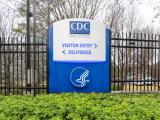May 12, 2004 (CIDRAP News) Businesses that install systems to detect airborne anthrax should have detailed plans to follow in case the pathogen turns up, the Centers for Disease Control and Prevention (CDC) said recently.
To encourage such planning, the CDC has published a 16-page set of guidelines. The guidelines cover evacuation of buildings, decontamination and medical treatment for potentially exposed workers, laboratory confirmation of anthrax findings, and evaluation of potentially contaminated environments.
The report, published Apr 30, notes that the US Postal Service plans to install an automatic monitoring system called the Biohazard Detection System (BDS) in about 300 mail processing centers around the country. The step is a response to the mail-borne anthrax attacks of 2001, which killed five people and made another 17 sick.
"A positive signal indicating possible presence of a biologic agent requires a coordinated, swift, and effective response," the CDC document says. A detection system should be installed only in businesses where, if anthrax spores were introduced, machines or production steps might disperse them as an aerosol, the report says. Further, such detection systems should be used only in combination with comprehensive response planning and where laboratory confirmation of anthrax findings is available.
Employers should designate evacuation routes and places where workers can go for decontamination in the event of an anthrax finding, the report says. If possible, a separate exit route and decontamination area should be provided for workers with the greatest exposure to anthrax, such as operators of postal canceling machines. Decontamination plans will require agreements with outside partners, such as emergency medical services or public health agencies.
Any anthrax detection by an automated system should be confirmed by a Laboratory Response Network (LRN) laboratory with polymerase chain reaction assay and culturing, the CDC says. Environmental sampling may be necessary both to find the source of contamination and to determine which employees need post-exposure prophylaxis (PEP), the guidelines state. However, the CDC does not recommend nasal swabs of potentially exposed workers to test for Bacillus anthracis.
Because incubation periods for inhalational anthrax have ranged anywhere from 1 to 43 days, PEP should include both prolonged antibiotic treatment and vaccination, the CDC advises. When an LRN lab has confirmed the presence of anthrax, potentially exposed people should receive 60 days of antibiotic treatment and three doses of anthrax vaccine.
Since PEP should begin within 15 hours of a preliminary anthrax finding, employers will need agreements with public health agencies or other collaborators for fast access to antibiotics, the CDS says. This could necessitate keeping a supply of antibiotics on the site or making arrangements with local pharmacies or hospitals to keep a supply for the employer.
Other recommended precautions include a plan for providing accurate information to employees and the media.
CDC. Responding to detection of aerosolized Bacillus anthracis by autonomous detection systems in the workplace. MMWR 2004;53(early release):1-11 [Full text]




















